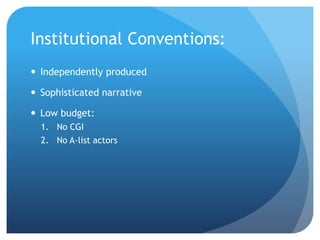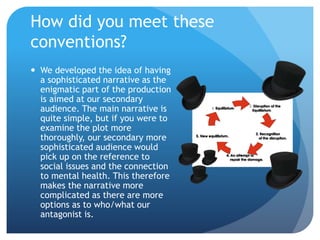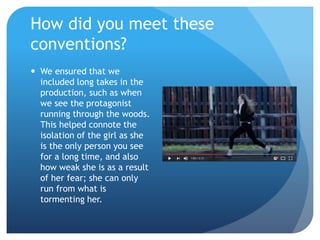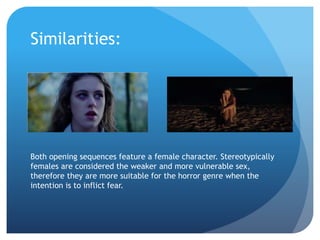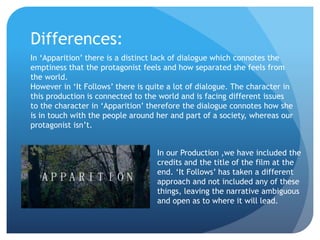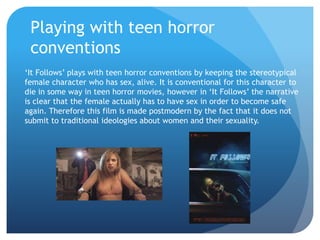The document summarizes how the media product meets various conventions of horror genre films. It discusses using relatable locations, flashbacks, an orchestral score, everyday character appearances, references to social issues, lack of weapons, and low-key lighting. It explains how the opening sequence incorporates these elements to set up the narrative and introduce the protagonist's turmoil in a way that will engage the target audience.

















